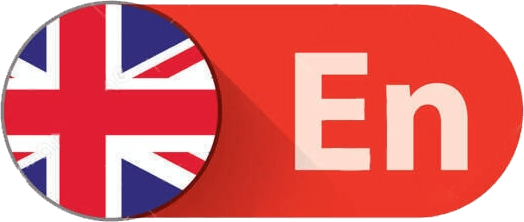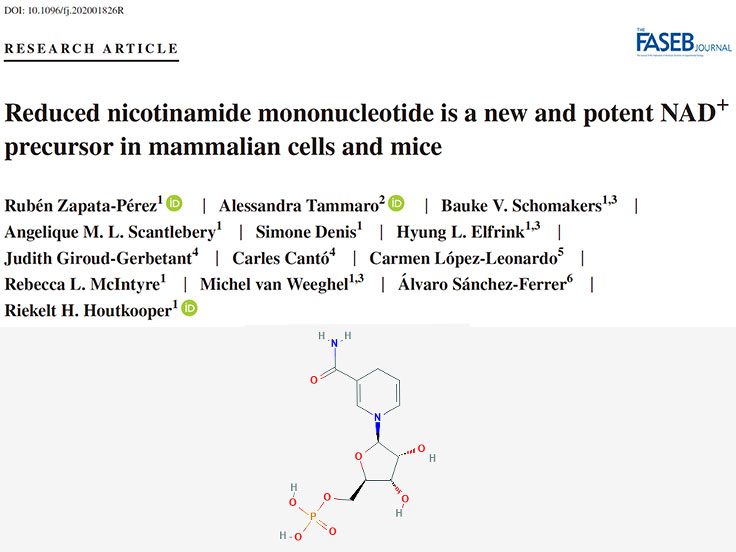On the anti-aging & longevity supplement market, NMN (Nicotinamide Mononucleotide) and NR (nicotinamide riboside) are the two best-known NAD+ precursors, followed by Nicotinic Acid (NA), Nicotinamide (Nam), and Tryptophan (Trp). The precursors listed above are all Vitamin B3 derivatives except L-tryptophan.
Now a new NAD precursor from Hygieia Biotech is commercially available to the market in 2021, it’s reduced nicotinamide mononucleotide, also known as reduced NMN or NMNH for short.

A new study on Reduced nicotinamide mononucleotide is a new and potent NAD+ precursor in mammalian cells and mice is published in the journal of the FASEB (Federation of American Societies for Experimental Biology). The key points can be summarized as below:
- In comparison to NMN and NR, NMNH increases levels of NAD+ in a much faster and greater manner, and then it is metabolized through a different, NRK and NAMPT-independent, pathway.
- NMNH improves renal epithelial cell repair after hypoxia/reoxygenation injury.
- NAD+ levels rise rapidly and are sustained in whole blood after administration of NMNH to mice, which is accompanied by increased levels in liver, kidney, muscle, brain, brown adipose tissue, and heart, but not white adipose tissue.
As we know, NAD+ levels in our bodies are maintained by three independent pathways:
- the Preiss-Handler pathway (dietary NA to NAD+)
- the De novo synthesis pathway (Tryptophan to NAD+)
- the Salvage pathway.(NR, NMN to NAD+)
The researchers report that NMNH is efficiently converted into NAD in cells. Perhaps most interestingly, the path to achieving this does not involve nicotinamide riboside kinase (NRK) or nicotinamide phosphoribosyltransferase (NAMPT), which other precursors require in order to become NAD.
NMN VS NMNH
According to the study, NMNH beats NMN in several ways as below:
NMNH is more potent than NMN
NMNH increased cellular NAD+ levels more significantly than NMN at every concentration (Figure 2A). NMNH was able to increase NAD+ at a concentration 10 times lower than NMN (5 μM), and reached a plateau at 500 μM. NMNH reached almost a 10-fold increase in NAD+ concentration while NMN was only able to double NAD+ content in these cells, even at 1 mM concentration.

NMNH works much faster and longer than NMN
NAD+ levels significantly increased within 15 minutes after NMNH supplementation (Figure 2B). NAD+ increased steadily for up to six hours and remained stable for 24 hours following the addition of NMNH whereas NMN reached its plateau after just one hour, presumably because the recycling pathways leading to NAD+ were already saturated.

NMNH increased NAD+ levels in more tissues than NMN
Further, NMNH increased NAD+ levels in a range of tissues more than NMN, with the most notable effects occurring in the liver (over 5-fold increase) and kidney (over 2-fold increase). NMNH also significantly increased NAD+ content in other tissues, such as the brain, gastrocnemius muscle, brown adipose tissue, and heart, while NMN failed to do so.

Summary:
In summary, these results suggest that NMNH is more efficient at increasing NAD+ levels than NMN in various tissues when compared with NMN. Combined with previous findings, these new data suggest that reduced NAD+ precursors can act as highly potent NAD+ enhancers and that this could lead to a new generation of very efficient NAD+-boosting molecules. The NMNH pricing and efficacy soon will be much better than NMN powder at present.
Reference:
Reduced nicotinamide mononucleotide is a new and potent NAD+ precursor in mammalian cells and mice



